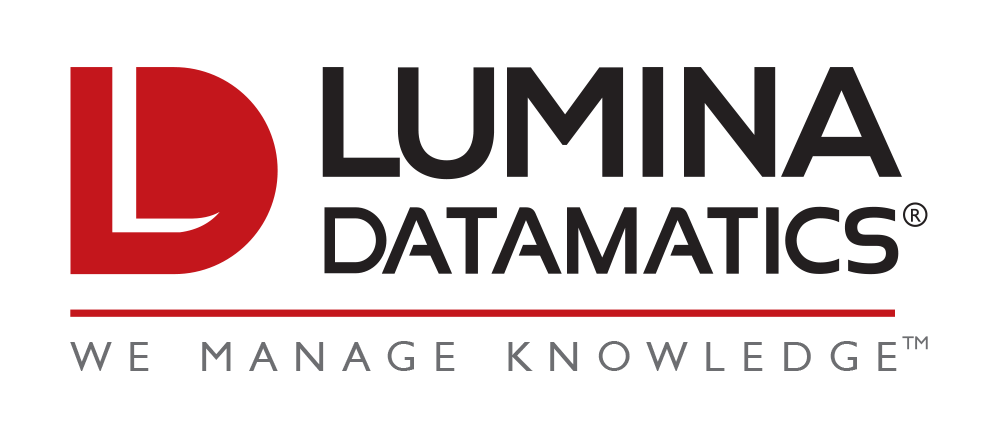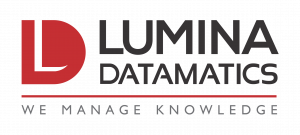It’s a big day—you (or your institution) have decided to explore whether you can make the switch from adopting traditional educational products to lower cost (or free) OERs. But there’s a lot to think about in making that change. For example, one of the key benefits of purchasing a course “package” from a traditional educational publisher is that a core textbook is only one piece of a much larger set of teacher and learning materials. That is, by adopting a core product, an instructor is also given access to its supplements, which include key instructional and assessment tools. While these tools are often free for the instructor, the same is not true for students. So, in considering whether to make the switch to alternative teaching materials, you—and your institution—need to assess which of those supplements provide sufficient value to warrant the additional cost to students.1
This post will provide a summary of the most common types of supplements2, along with their pros/cons. Are they worth the added cost to students, and if so, why? The short—and as always, frustrating—answer is “sometimes.” We’ll organize these supplements by breaking them into three main categories to better help you assess and evaluate the various tools out there: Teaching Tools, Student Review and/or Practice Tools, and Assessments.
Teaching Tools
Instructor’s Manuals: Instructor Manuals (IMs) are lecture guides (typically downloadable as either MS Word or PDF) designed to help the instructor plan their teaching. They may include any or all of the following: summary or outline of chapter content, list of key terms and definitions, questions to stimulate discussion, optional activities or experiments, and the like. IMs can provide a solid blueprint from which to build a lecture or class period. They may also include lists or links to additional experiments or PowerPoint content that is associated. Some instructors find these incredibly useful, and would never want to go without them. However, if your budget is tight, you can fairly easily go without this particular supplement.
PowerPoint Decks: First a disclaimer: PowerPoints (PPTs) are my least favorite of the supplement types, with (in my mind) a well-deserved reputation of being…well, redundant. In past years, many PPT decks were simply a shortened—but still largely regurgitated—version of the textbook content. This was, however, by design, as the structure allowed them to be used as an outline or summary of important chapter content. An instructor could display the PPT on screen then talk through its content while adding additional detail and context. Sometimes decks included additional descriptions, art, multimedia or questions, but not always. To be fair, this was not and is not always the case—and, increasingly, content providers are rethinking how they build PPTs. They now often opt to create value-add content that enhances the core content that students should already be reading/consuming elsewhere.
A second common type of PPT is art-only, which is exactly what it sounds like—a deck of only art, photo, and figures, often with editable labels. The benefit of these is that you can add or remove labels as needed for discussion or for testing purposes.
Still, PPTs may be something you can cut fairly easily from your instruction, depending on how you typically structure your teaching. Alternately, you may be able to find an OER deck with a bit of digging, or even opt to simply create your own. If you do, though, a word to the wise—make sure that the deck is fully compliant with ADA requirements.3
Syllabi and Other Planning Guides: While not all traditional educational content providers offer a pre-built syllabus as part of the package, some do. These syllabi provide a guide to how you might set up the semester’s worth of instruction and learning, with recommended additional assignments, multimedia, and order of coverage. They are typically easy to download and customize for your individual course (some, like Cengage Educator Guides, include a list of assets tied to each chapter, with the idea that knowing the resources available will aid in planning and assignments). If you already create your own syllabi and don’t bother with those provided, you won’t miss them. Keep in mind, too, that these syllabi are designed to correlate all other materials/assignments provided as part of the “package.” If you’ve already made the decision to use OERs for your main course materials, you wouldn’t have access to those linked components anyway, which makes the associated syllabus significantly less useful.
Student Review and/or Practice Tools
Solutions Manuals: Many texts include end-of-chapter questions; this is particularly common with denser topics, everything from chemistry to accounting. These questions are an opportunity for students to practice applying what they’ve learned from the core text and associated lectures. Questions might exist directly within the textbook itself, at the end of the chapter or unit, or in a separate, purchasable Student Solutions Manual, which may include stepped out solutions, video tutorials, and helpful problem-solving tips. A student solutions manual typically includes these materials for only some of the questions, whereas the instructor solutions manual includes them for all questions. If your course is one that typically relies on a heavy amount of practice, it may be difficult to skip a solutions manual entirely. However, there is an increasing number of OERs available for the savvy searcher. Another option might be to pair with colleagues in the same department (assuming you have a large enough department to have a colleague teaching the same subject) or other institutions to author original problems and then share them.
Workbooks: Workbooks present a similar opportunity for practice, with the main difference being an ability to write directly in the workbook itself (i.e., on page).
Flashcards: When I think of flashcards, I think of the handwritten ones I made on purloined recipe cards. And while this particular type of memorization tool can just as easily be handmade today as it was 20 years ago, many educational content providers offer these in digital form. Still, at their root, flashcards, whether print or digital, are essentially drill/memorization tools that can fairly easily be made by you or your students as needed.
Study Guides & Case Studies: Study guides and case studies are similar in that they are typically “extra” materials designed to foster deeper understanding of the content. Study guides might include online notes, research topics, or different ways to think about or even visualize the content. Case studies may stand alone, or be nested as a part of a study guide or other supplement. Case studies are typically a real-life scenario that is relevant for the topic being learned—e.g., an accounting student might expect to see a case study about the Enron scandal; an environmental science or law student might see a case study about the 2010 BP oil spill and subsequent litigation and environmental regulation changes.
Here, as with flashcards, you could potentially ask your students to provide interesting and relevant applications of previously taught concepts (the added benefit here is that your students would also be applying critical thinking and research skills). Or, if there are particular cases you know you typically teach, you can include those as part of the instructional materials you intend to create yourself.
Online Interactives, Video Libraries, etc.: Another key feature available in many pre-fab course packages is a ready-made, curated library of digital assets. That is, someone with subject matter expertise has already done the heavy lifting in terms of either finding or creating relevant videos and other multimedia assets that correlate to the written educational content. However, for the tech-savvy (and industrious!) instructor, there are a wealth of videos and other multimedia easily findable by conducting a fairly quick and simple online search. Note, though, that if you intend to physically duplicate or embed third-party multimedia, you’ll need to carefully consider whether you need permission in order to do so.
Assessments
Auto-gradable Homework and Other Online Practice: Many educational content providers now offer online practice or homework as part of the overall package. The benefit to this is twofold—the student receives additional opportunities to complete/submit materials online, and the instructor can rely on automatic grading. In many cases, such as Cengage Unlimited, these pieces are part of the “package deal” that includes the core content and all student-facing supplements. With more and more instructors sharing OER resources, chances are high that with a bit of digging, you can find one or more suitable for your instruction. While that doesn’t help with the auto-grading issue, it does give you a starting point with regards to the materials themselves—and here, as with other supplements, if you can’t find the perfect OER, you can always create one.
Test Banks: Test banks are typically made up of hundreds (or even thousands) of questions that can be used to create tests—whether those tests are chapter- or unit-based, midterms, finals, or something else. Questions may come in a variety of types, often dependent on the subject matter itself. While many instructors can (and do) author their own test questions, it’s important to note that writing good, unbiased questions is difficult to do—and not everyone can do it well. But this isn’t a simple supplement to simply replace with an OER. It can be challenging to find OER assessment that is both suitable for your precise needs and has not already been exposed online (i.e., if you can find it, your students can likely can, too). So, this is one supplement that may be challenging to replace—but still not impossible.
Adaptive Assessment: Adaptive assessments are similar to test banks, in that a high volume of questions is provided to your students without you having to spend hours seeking out unexposed banks or writing questions yourself. Adaptive assessments are used to better map a student’s true level of mastery. That is, questions delivered are based on the student’s previous response—if a student answers a particular question incorrectly, they may be given an easier question, with the idea being that the student and instructor can come out of the assessment with a more accurate idea of where weaknesses lie—and in the instructor’s case, provide the necessary remediation. Students can view their performance data and use it to target areas of weakness in their personal study time. Unfortunately, adaptive assessment created by publishers and delivered within the necessary online engines, is virtually impossible to replicate by the instructor. Rather than asking, “how do I replace adaptive assessment?” ask yourself “Do I need adaptive assessment?”
Key Takeaways
It seems clear that many of the most common supplements can be either replaced (with some extra time or available budget) or skipped entirely should you or your institution make the decision to shift to OERs. It’s important to first consider which supplements you view as integral to your teaching, and then to decide whether and how to replace them. Whether you consider hiring an experienced third-party such as Lumina to find or create vital supplemental material on your behalf, or you plan to take the time to mine various OER databases such as OER Commons yourself, try to keep in mind that you have several options as to the right supplementary package to fit your teaching needs.
Whatever route you choose, happy hunting!
Interested in learning more about OER curation or supplements? Email our team to learn more about how we author supplements or to request a quote. You can also visit our website to learn more about Lumina Datamatics.
Notes:
- This post is NOT going to delve into all-inclusive models, such as Cengage Unlimited. Rather, it will focus on what each supplement type is, how it is created, and whether it’s something you and your institution can live without…or find more affordably elsewhere.
- To be clear, this list is not meant to be comprehensive, by any stretch of the imagination. Different courses and products will have different supplementary content. Some may include all of the types discussed here, some of them, or none of them. They may include other, more cutting-edge components, such as AR/VR. This list is meant to discuss the most common supplement types, as opposed to every possible option.
- As with core content, PPTs created by major educational content providers are legally required to be fully accessible—meaning the deck content is tagged for reading order, and all images accompanied by alternative text descriptions. So, while you as the instructor certainly can create your own PPTs, in whatever form you like, you MUST take into consideration accessibility requirements—something major publishers will have already done in their own content. This is true of all supplement types.





0 Comments